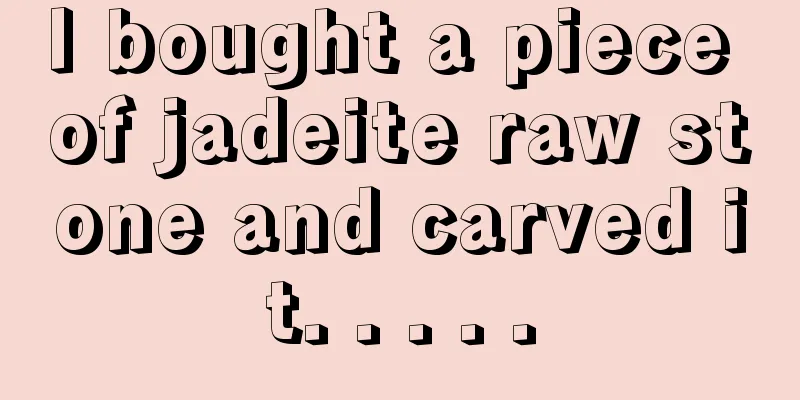What are the steps and processes in the processing of jade carving from raw materials to finished products?

|
Jade carving techniques are very important in the history of jade development. Because it amplifies the characteristics of limited high-quality jade, it not only saves raw materials but also allows more people to enjoy the beauty of jade. The art of Chinese jade carving reached a peak during the Song Dynasty, when the "Qiao Se" technique was pioneered. The emphasis was on amplifying the natural color and texture of the raw materials during the jade carving process, and then selecting themes and designing the layout based on the characteristics of the materials. The art cleverly used patterns and colors to create works while avoiding cotton, grain, and dirt, and combined them with cutting, smoothing, threading, hollowing, pushing, bumping, hooking, and rolling techniques to finally produce a fine jade carving. The first step is to analyze the jade raw material to determine the color trend, color distribution and area size, extended areas, changes in hue and color, as well as the transparency of the raw material and the location of small defects such as cotton texture. It is worth noting that when encountering cracks, it is necessary to analyze whether the cracks are related to the color. Generally speaking, the parts of a piece of raw material without cracks are used to make bracelets, the parts with cracks are used to make decorative pieces or ornaments, and the parts with skin from water materials are suitable for making handles. The second step is to design the raw materials, which is commonly known as "clever color", "beautiful color" and "color separation". Clever use of colors refers to the ingenious use of the colors of the raw materials, such as green leaves, Guan Gong’s red face and so on. Qiao Se means to further highlight the color part on the basis of Qiao Se, so as to make the visual presentation of jade carving more focused. Color separation is based on color matching, and different colors are strictly distinguished without any drag, which makes the picture sense on the jade carving stronger. The third step is to carve the jade as a whole, which can be summarized in one sentence: "cutting, polishing, carving and grinding". Cutting refers to cutting the jade. With the help of machines and jade sand, it is cut along the texture of the jade. Polishing refers to trimming the jade raw material into a rough shape. Carving refers to drilling and carving, and carving the jade carving according to the design drawing. Grinding is to grind and polish the jade carving to make the color of the jade carving brighter and the touch smoother. After completing these three steps, a jade carving with prominent subject matter, beautiful colors and exquisite craftsmanship is created. fcgc66 fcpf18 |
<<: What kind of jade is more worthy of investment and collection in 2021?
>>: Revealing the secrets of jadeite processing
Recommend
How should jade earrings be matched with different face shapes? The right combination looks so good...
Love of beauty has been one of women’s natures si...
Why are all the jadeite we like so expensive? This is the truth!
Jade is really expensive. Once jadeite of extreme...
The beauty of jadeite inlay
Any classic must meet the needs of modern people ...
The essence of nature, the four beauties of jade!
People classify the beauty of jade into four cate...
Tender Jade——History, Culture and Legend of Jade
China does not produce jade. It is generally reco...
Do you know the meaning of the jade deer?
Li Bai wrote in his poem: "Deer can be seen ...
Jade has "three kinds of water", and none of the "waters" is simple.
"Sanshui" not only describes the color ...
If you want the jade to be more valuable, it has to have some green in it.
Jade lovers all like jade with floating flowers, ...
Why does everyone like jade necklaces? It turns out the charm lies here!
Jade bead necklaces have always been one of the m...
The colorful world of titanium and jade The colorful world of titanium and jade
When gentleness meets masculinity, when restraint...
The meaning of jade lobster, the artistic conception of high-quality jade, and the difference between jade sheet and seed material!
1. The difference between jadeite sheets and jade...
The collection and investment value of jadeite
For many years, the price of jadeite has remained...
Which one is more valuable: a jade bracelet or a jade pendant?
Question: If you are given 50,000 yuan to buy jad...
I bought a piece of jadeite raw stone and carved it. . . . .
Jade is the essence of mountains, rivers and land...
The creation process of ice red jadeite raw stone, the jade carver has a heart that respects nature
Each piece of exquisite jade work is not born tha...









